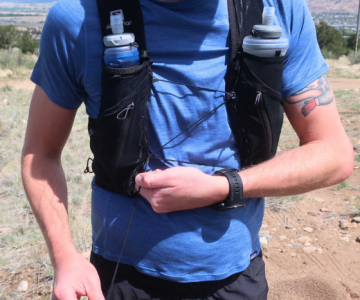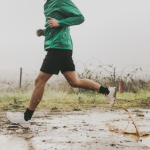As the days grow shorter, many runners find themselves heading to the trails in the dark. Running at night can be a thrilling and rewarding experience, but it comes with its own set of challenges. With the right approach and gear, you can navigate your trail runs safely and enjoyably after dark. Here are nine essential tips for running trails in low light.
Stick to Familiar Trails
When running in the dark, it’s crucial to stick to trails you’re familiar with. Navigating unfamiliar terrain at night can be difficult, even with the best lighting. If you’re new to night running, try doing a daylight run on your usual routes so you can identify key landmarks that will help you when the sun sets. This will make you more confident in finding your way, even when the trail looks entirely different at night.
Dress for the Weather
Nighttime temperatures can drop significantly, even during the warmer months. Be sure to pack extra layers to stay warm and dry, especially if you’re running in colder or wet conditions. A light rain jacket is a good idea for protection against the elements, but you’ll need more than just a shell to stay warm. Consider adding a fleece or a long-sleeve base layer underneath to ensure proper insulation, especially if you’re not moving at a high intensity.
Be Prepared for Longer Runs
It’s easy to lose track of time and distance when running in the dark, so it’s always a good idea to prepare for a longer run than planned. Carry extra snacks, water, and spare batteries for your headlamp. On longer runs, it’s also smart to bring a small first aid kit and an emergency bivvy for safety. Even though it’s unlikely you’ll need these, it’s better to be over-prepared than under-prepared.
Tell Someone Your Plans
Running alone in the dark can feel a bit risky, so always let someone know your route and when you expect to return. Giving yourself a little extra time (about an hour more than you expect) ensures that your friends and family won’t worry if you take longer than expected. If you use apps like Strava or ShareMyRun, consider sharing your live location so someone can track you in case of emergencies.
Get the Right Light
Headlamps are the best choice for night running as they offer hands-free lighting. Look for a headlamp with a beam strength of at least 300 lumens. The light should be bright enough to illuminate the trail several meters ahead but also focused to highlight obstacles clearly. Consider a rechargeable headlamp for runs under four hours, but for longer runs, choose one with dual fuel capability, so you can switch to AAA batteries if needed. Make sure the headlamp fits comfortably and doesn’t bounce around while you’re running.
Adjust Your Vision
Even with a good headlamp, your depth perception can be challenging on the trail at night. It can take your eyes a little longer to pick up rocks, roots, and other obstacles. This is why it’s important to slow down and adjust your stride accordingly. The lack of trail detail will challenge your depth perception, so give yourself a little extra time to identify hazards.
Shorten Your Stride
In low-light conditions, you’ll want to adjust your running form. A shorter stride and faster cadence will help you maintain control and stability while running on uneven terrain. By keeping your strides short, you reduce the risk of tripping and make your movements more efficient. A cadence of around 180 steps per minute is a good target for maintaining balance and reducing fatigue during night runs.
Be Visible and Stay Safe
If your run involves roads, visibility is key. Wear bright, reflective gear or consider using reflective ankle and wrist bands. It’s also safer to run on the side of the road where you face oncoming traffic. This allows you to see vehicles approaching and react quickly if needed.
Skip the Headphones
Although it might be tempting to run with music, it’s safer to avoid headphones while running at night. Not only do they block out important sounds from your surroundings, like approaching vehicles or animals, but they also reduce your awareness of the environment. If you must listen to something, consider using a single earbud or no music at all. The quiet of a night run can be a welcome break from the noise of daily life, allowing you to be more present during your workout.
Ready to Run?
Now that you’re equipped with these tips for trail running at night, it’s time to head out and experience the trails after dark. With the right mindset and gear, nighttime running can be a unique and exciting adventure. If you’re looking for more advice on trail running, from techniques to gear recommendations, be sure to check out other articles on this site. You’re just a few steps away from discovering the world of night running. Happy trails!





